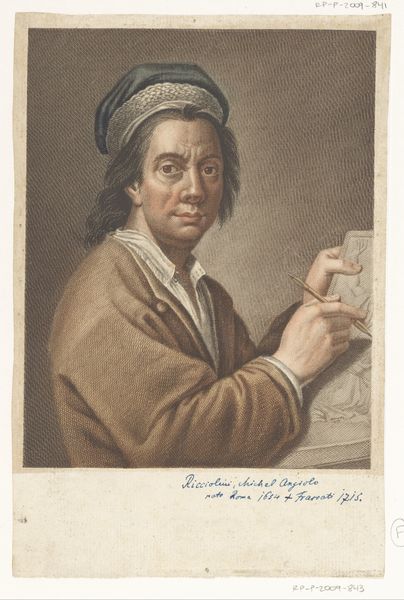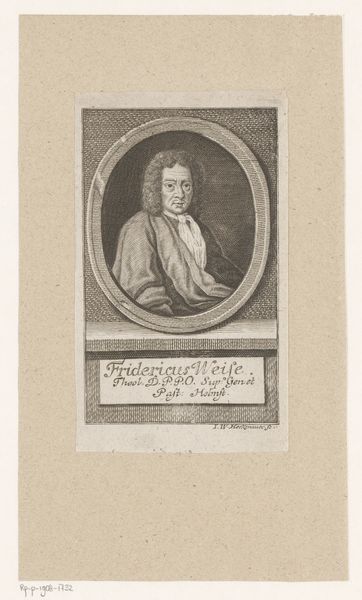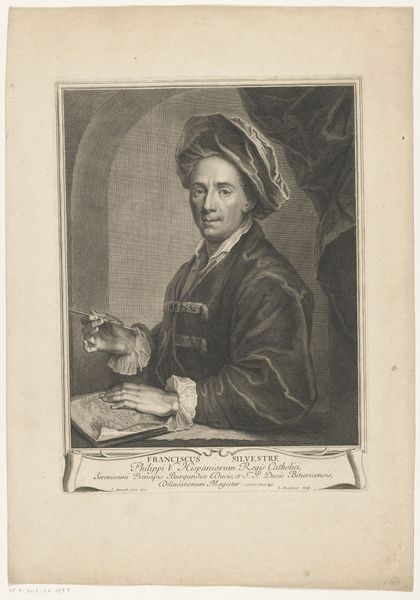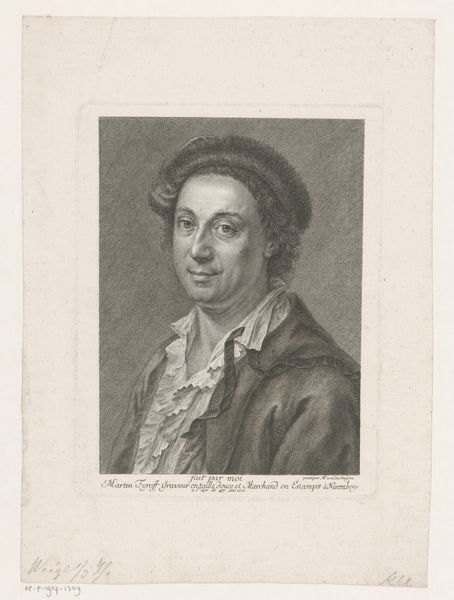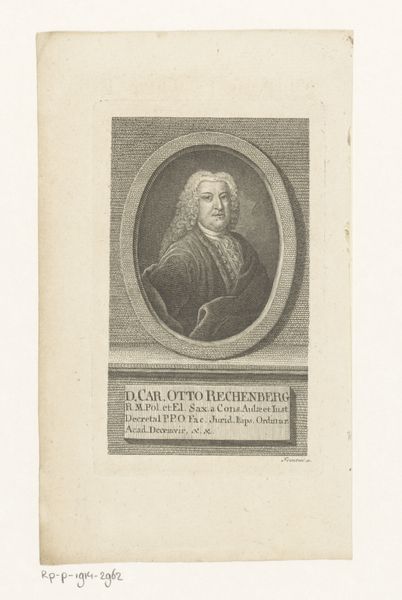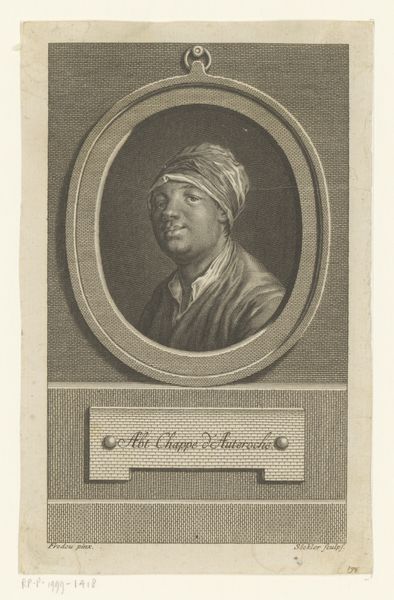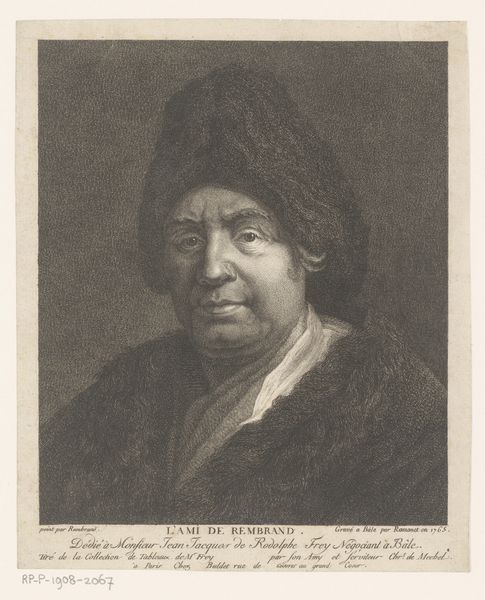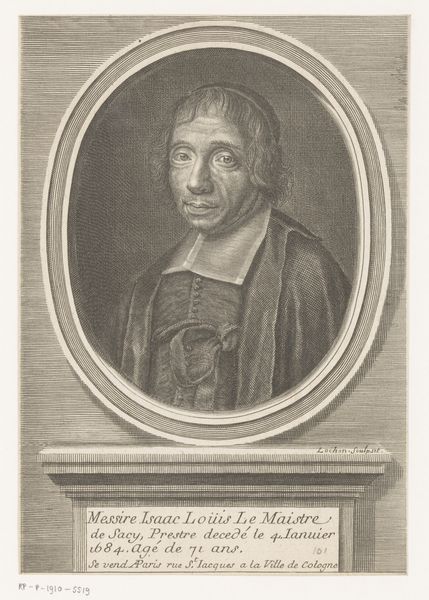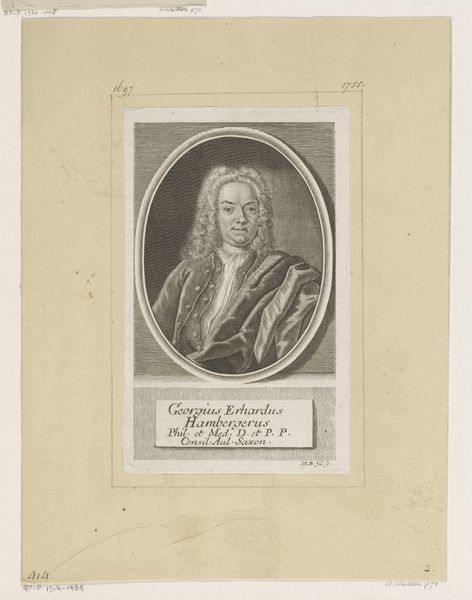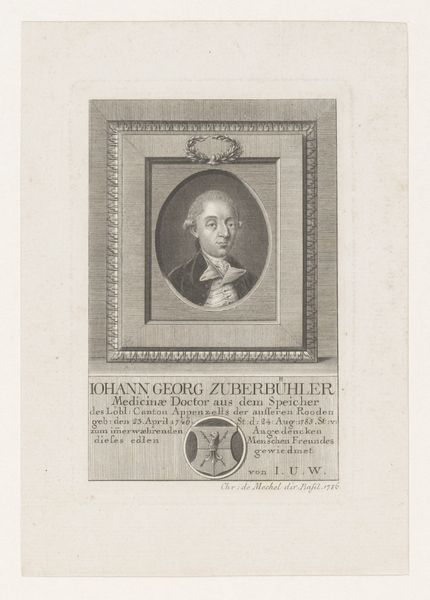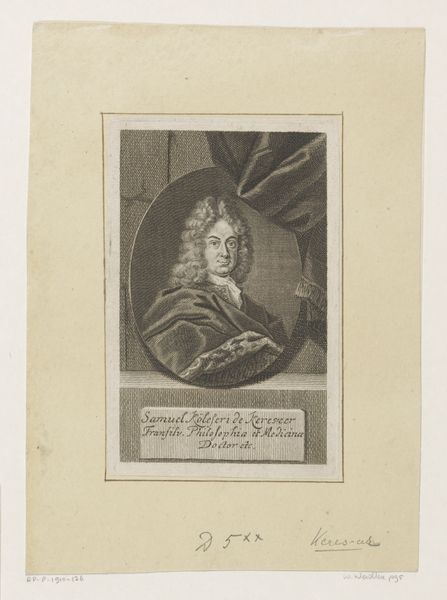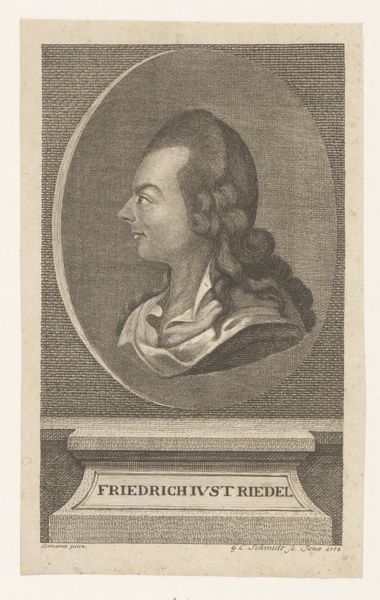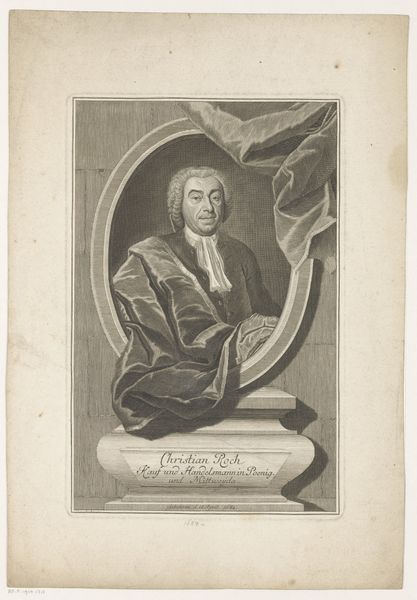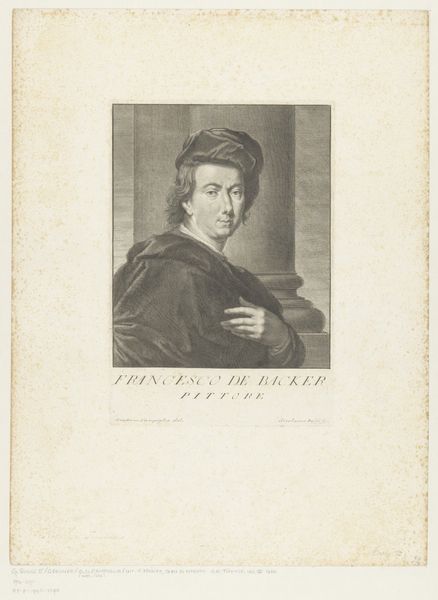
print, engraving
#
portrait
#
baroque
# print
#
history-painting
#
engraving
Dimensions: height 279 mm, width 181 mm
Copyright: Rijks Museum: Open Domain
Editor: So, this is a portrait, "Portret van kunstenaar Michelangelo Ricciolini," made between 1752 and 1762. It’s an engraving. The level of detail in this print is amazing, especially considering it's an early print. How do you read this piece? Curator: From a materialist perspective, this engraving offers rich insights. We see here not just a portrait, but a document of artistic production. The engraver's skill, their labor, is on full display through the dense network of lines that mimic the tonal gradations of painting. It prompts questions about the social status of printmaking versus painting, and how this reproduction impacts accessibility. It democratizes the image, if only for a select audience that has access to printed materials. Does this impact the meaning of the portrait itself? Editor: That's an interesting point – thinking about the act of making it. How would it affect the artist that is captured in this way? I wonder what printmaking materials and labour cost during this period. Curator: Exactly. The transition of artistic creation into a commodity, reproducible and saleable, shifts the relationship between artist and artwork, artisan and object. We could also consider the relationship between the subject, Michelangelo Ricciolini, and the engraver, Antonio Pazzi. Did Ricciolini commission the engraving, or was it an act of appropriation of his image? What does that tell us about artistic reputations at this time? Editor: That gives me so much to consider about art production beyond the pure aesthetic appreciation. Thinking about labour and commodification of art definitely reframes the portrait. Curator: Precisely. By focusing on these elements, we unveil the social and economic dynamics that shaped artistic creation, and our own understanding of it. Editor: Thanks! It has helped me see more beyond the surface of the image itself, considering the broader historical context and artistic process. Curator: It's about recognizing that art is always a product of its time, materially and socially.
Comments
No comments
Be the first to comment and join the conversation on the ultimate creative platform.
